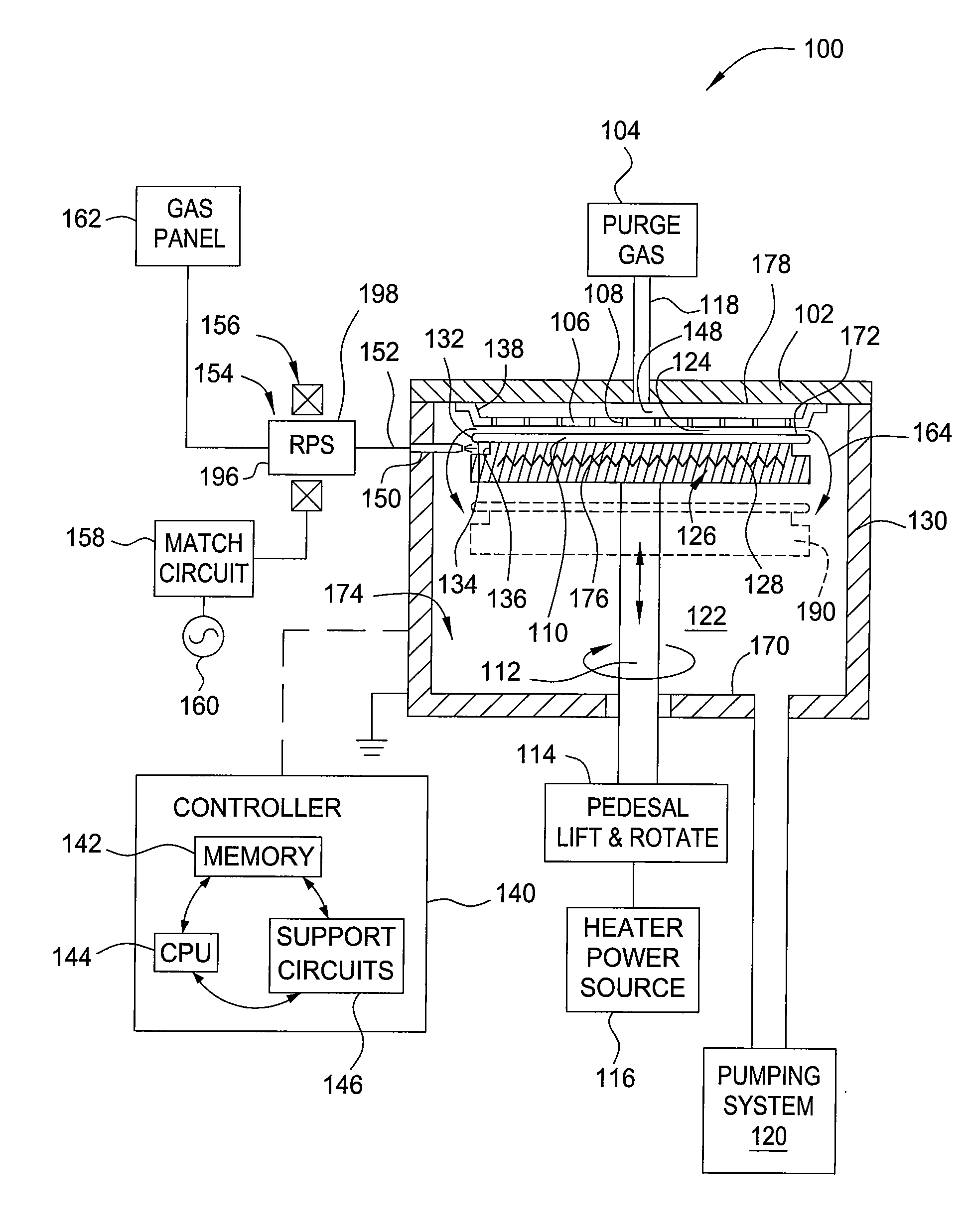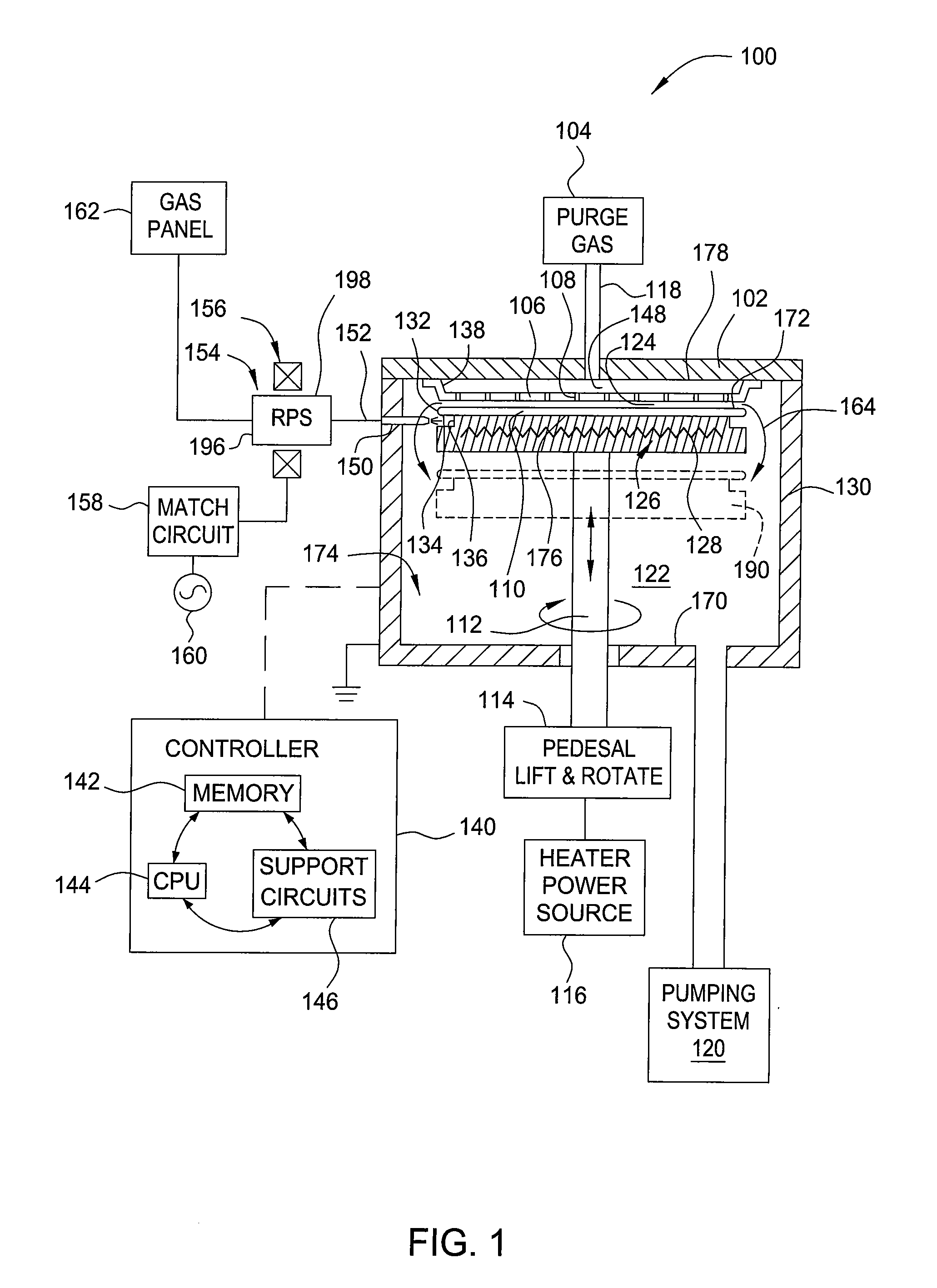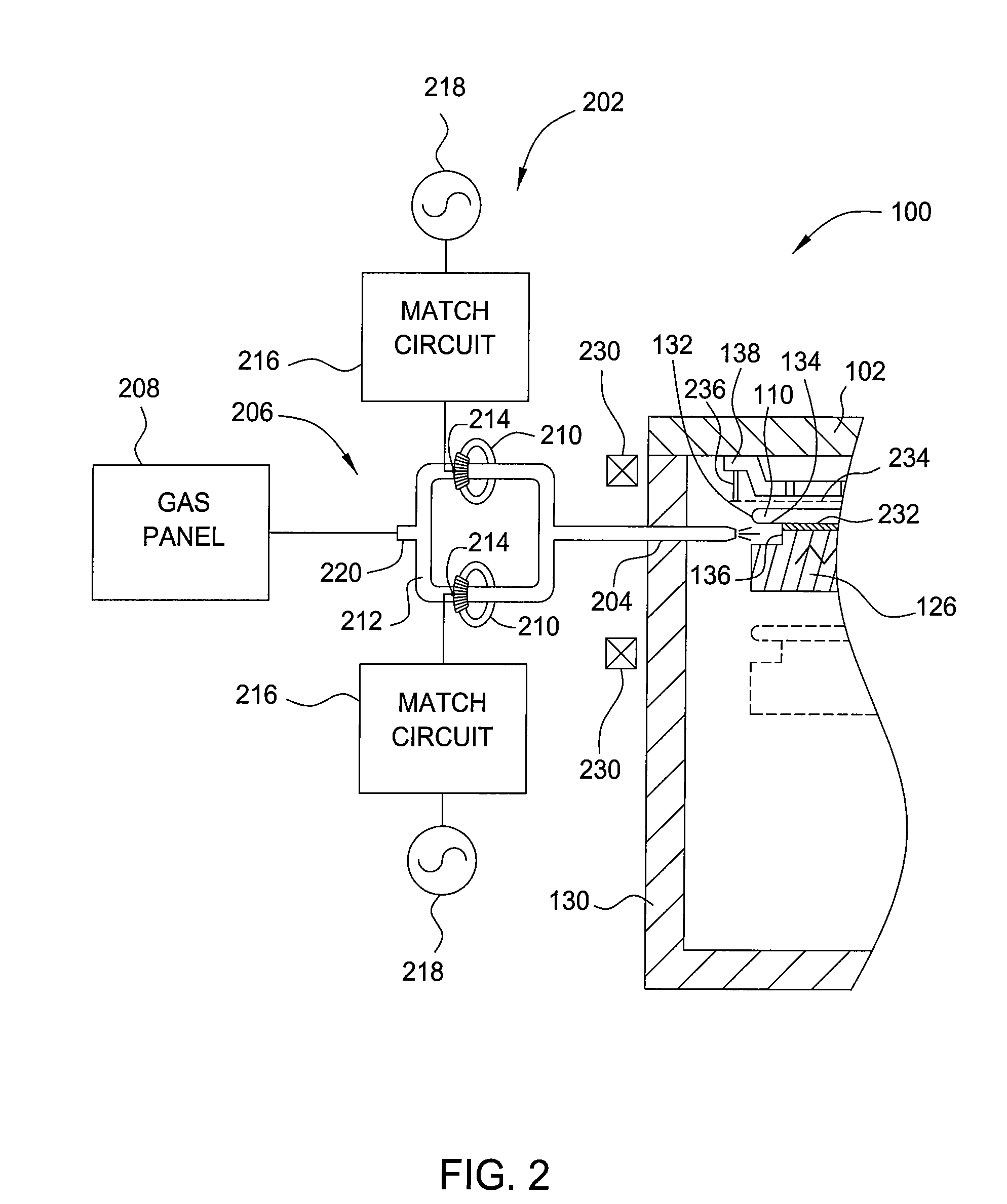Method and apparatus for removing polymer from a substrate
a technology of polymer and substrate, applied in the field of semiconductor processing systems, can solve the problems of forming defects, becoming a source of particulates, and integrating circuits becoming complex devices
- Summary
- Abstract
- Description
- Claims
- Application Information
AI Technical Summary
Benefits of technology
Problems solved by technology
Method used
Image
Examples
Embodiment Construction
[0022]Embodiments of the present invention include methods and apparatuses that may be utilized to remove polymers from a substrate periphery region, such as an edge or bevel of the substrate. The substrate bevel, backside and substrate periphery region may be efficiently cleaned. In the embodiment wherein a photoresist layer, if any, is present on front side of the substrate, the photoresist layer may be moved as well. In one embodiment, a polymer removal apparatus includes a plasma source fabricated from a hydrogen resistant material. The polymer removal apparatus is generally used to remove polymers from a substrate generated during a semiconductor substrate process, such as an etching or deposition process, among others. One exemplary polymer removal apparatus described herein, with referenced to FIGS. 1-2, is a polymer removal reactor, available from Applied Materials, Inc. of Santa Clara, Calif., and one exemplary substrate processing apparatus described herein, with reference...
PUM
| Property | Measurement | Unit |
|---|---|---|
| thick | aaaaa | aaaaa |
| frequency | aaaaa | aaaaa |
| frequency | aaaaa | aaaaa |
Abstract
Description
Claims
Application Information
 Login to View More
Login to View More - R&D
- Intellectual Property
- Life Sciences
- Materials
- Tech Scout
- Unparalleled Data Quality
- Higher Quality Content
- 60% Fewer Hallucinations
Browse by: Latest US Patents, China's latest patents, Technical Efficacy Thesaurus, Application Domain, Technology Topic, Popular Technical Reports.
© 2025 PatSnap. All rights reserved.Legal|Privacy policy|Modern Slavery Act Transparency Statement|Sitemap|About US| Contact US: help@patsnap.com



